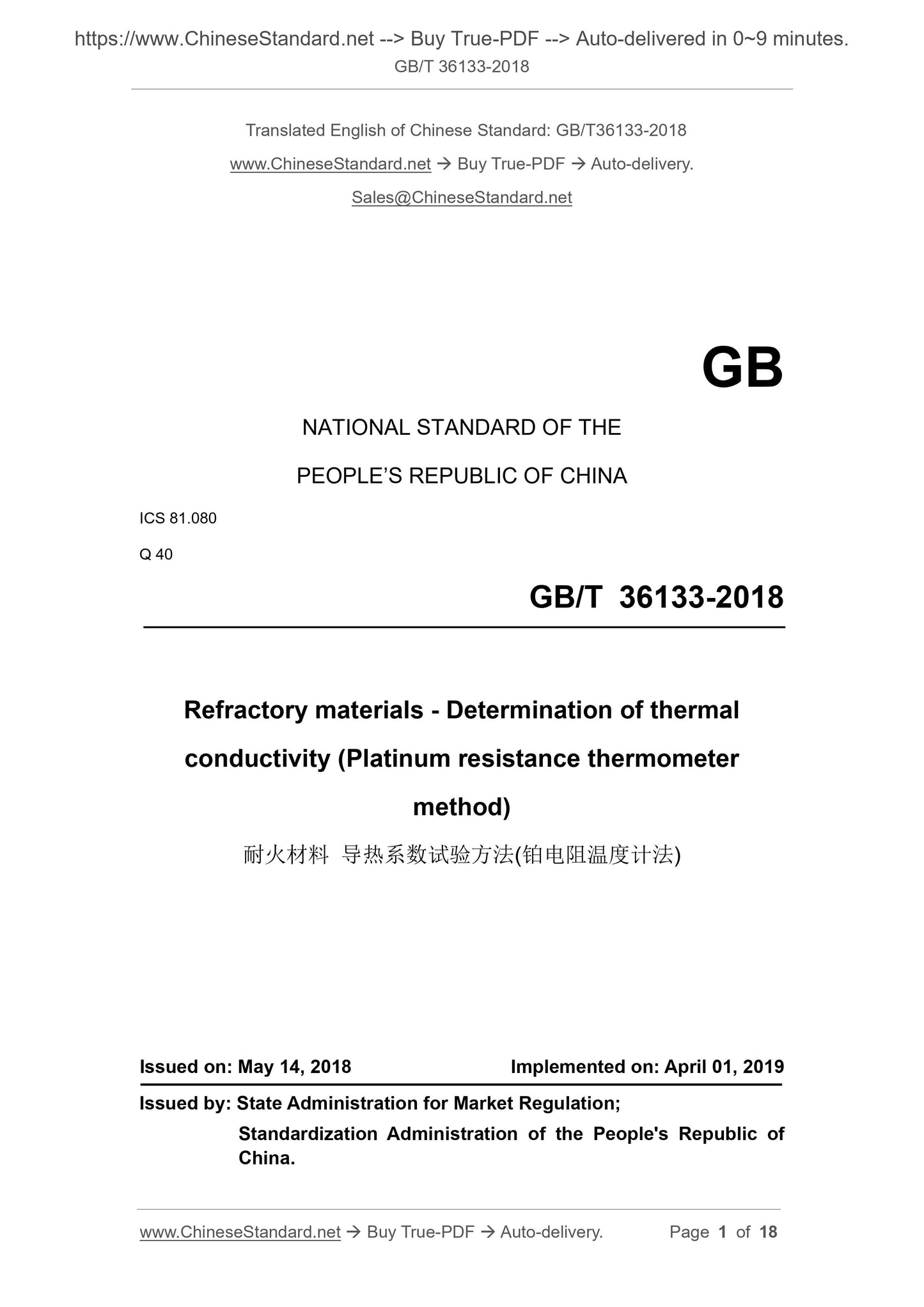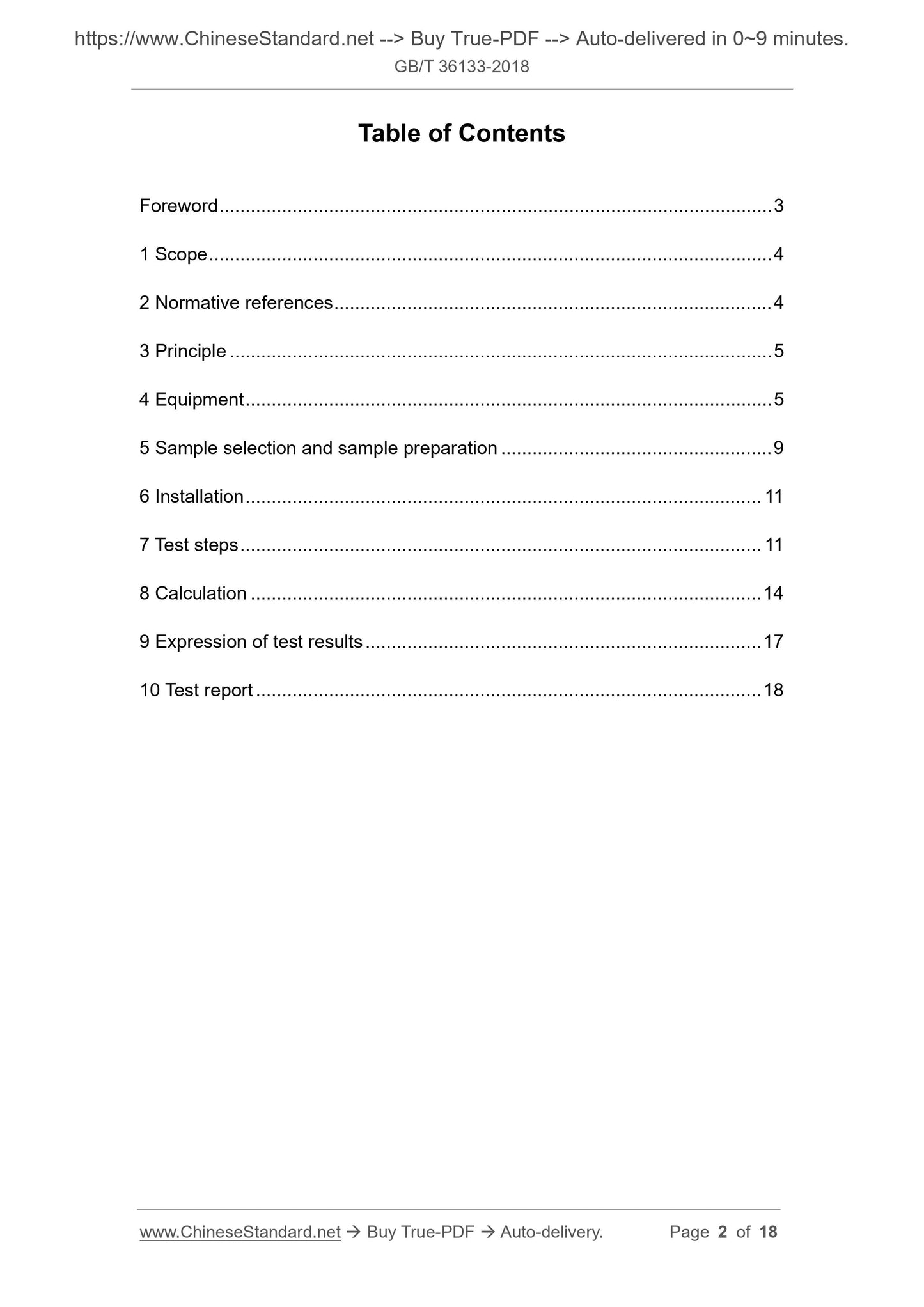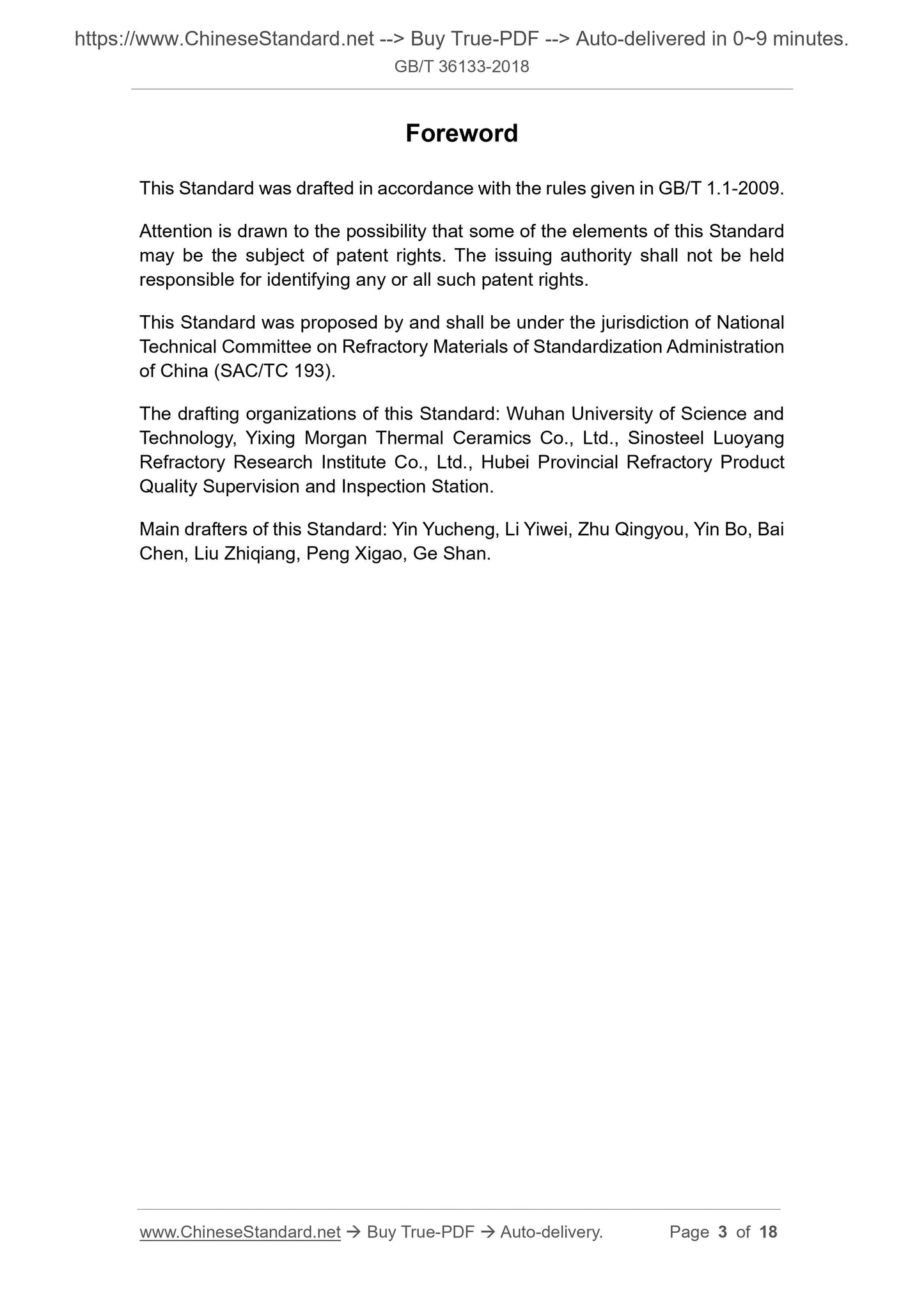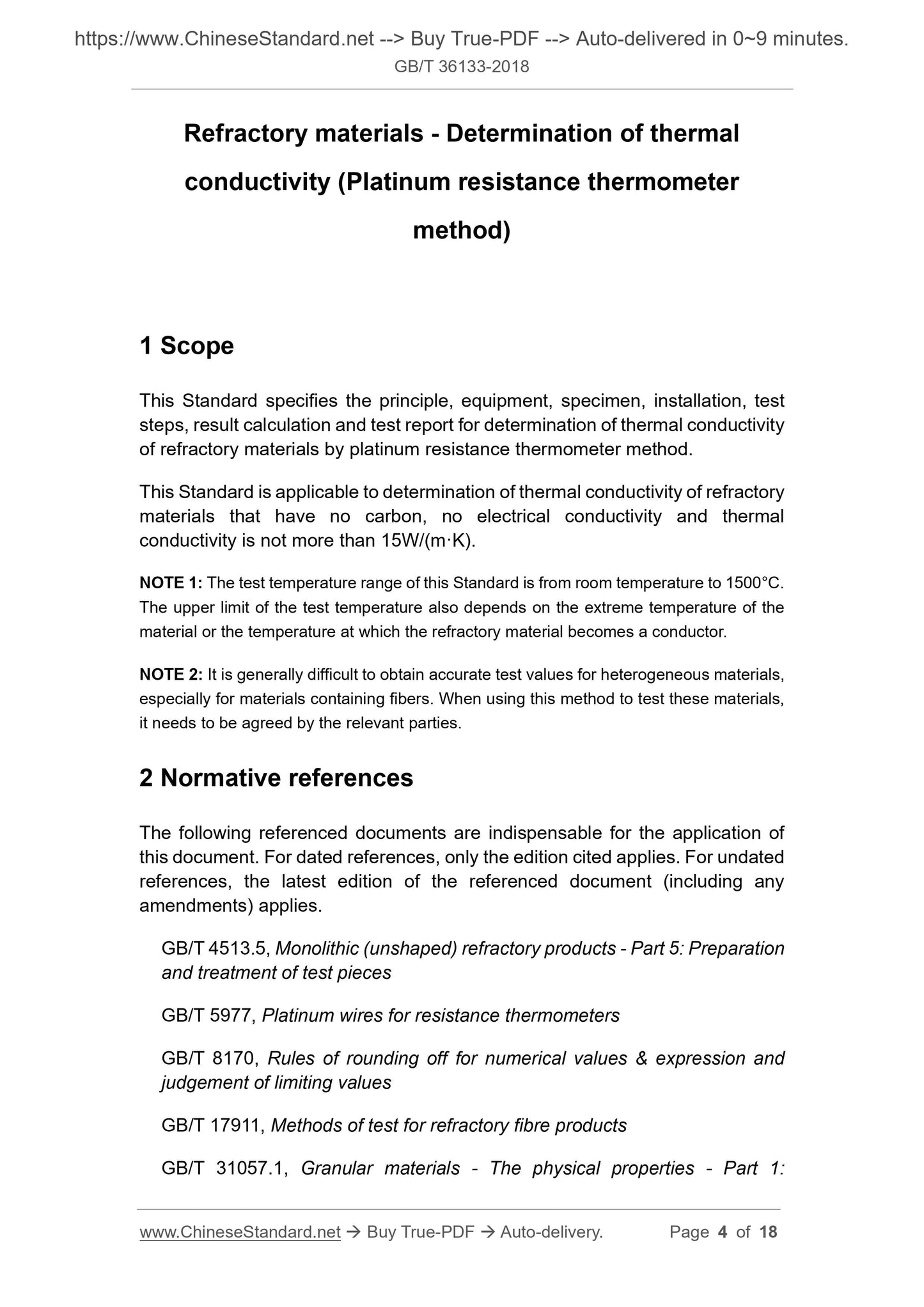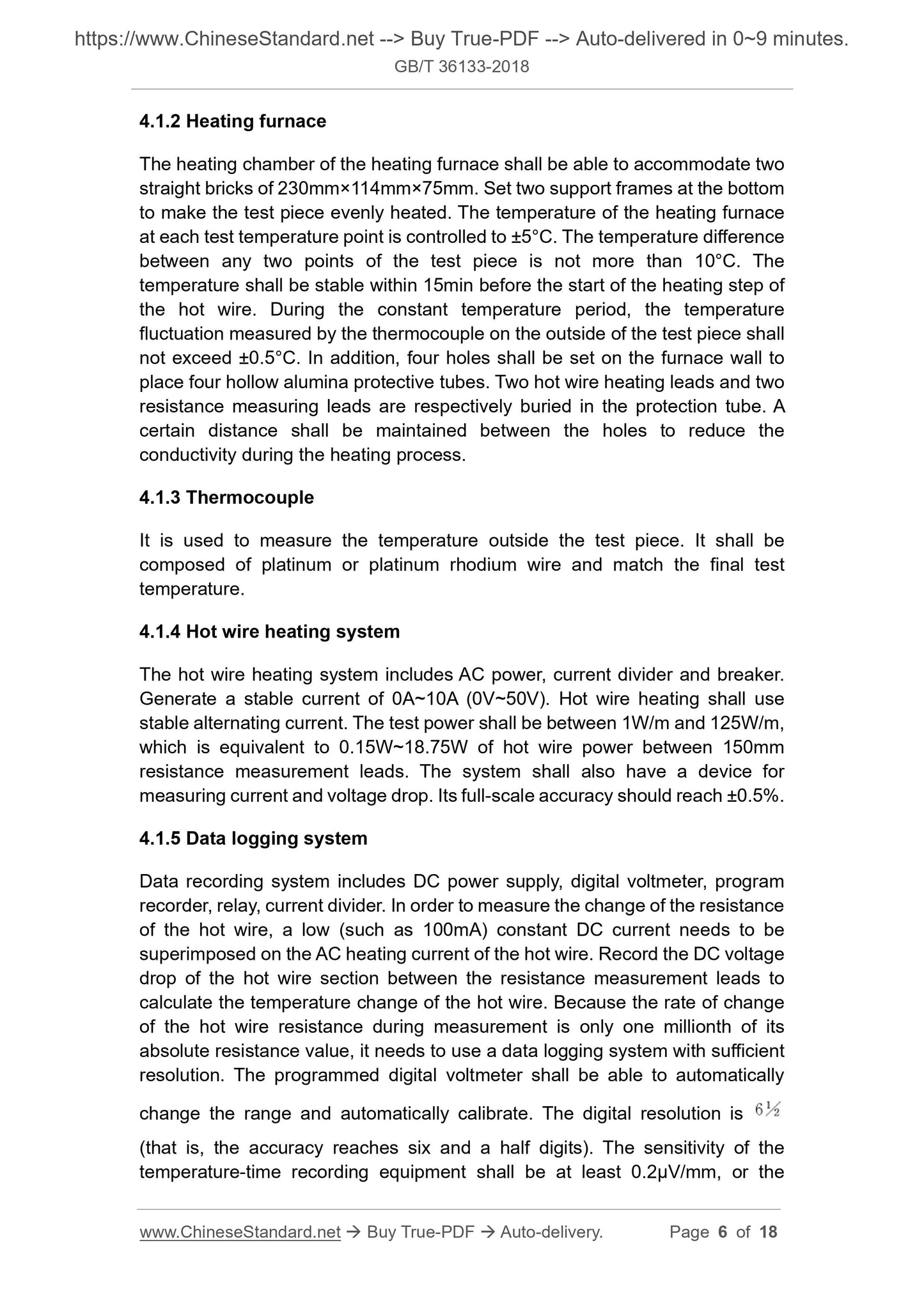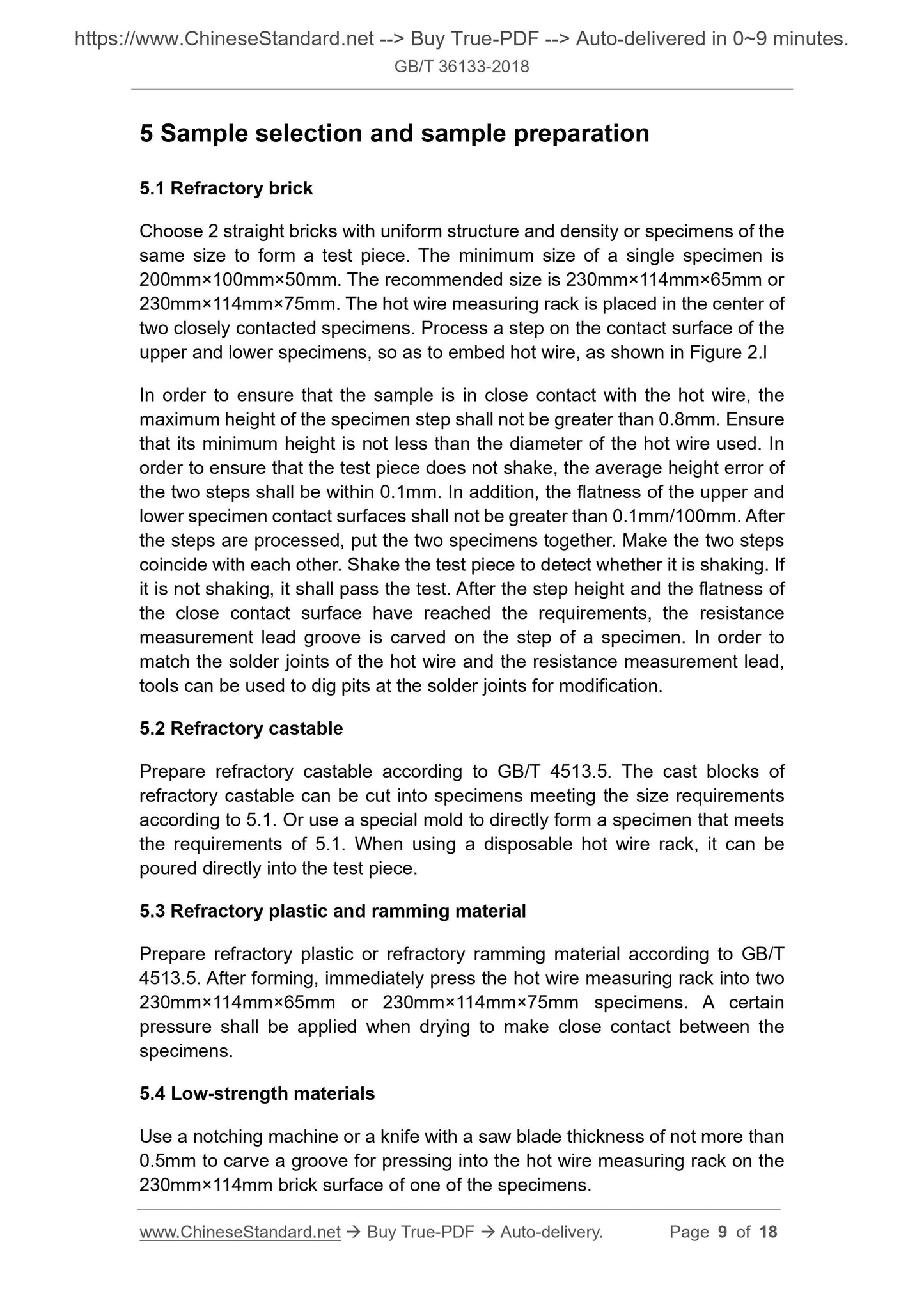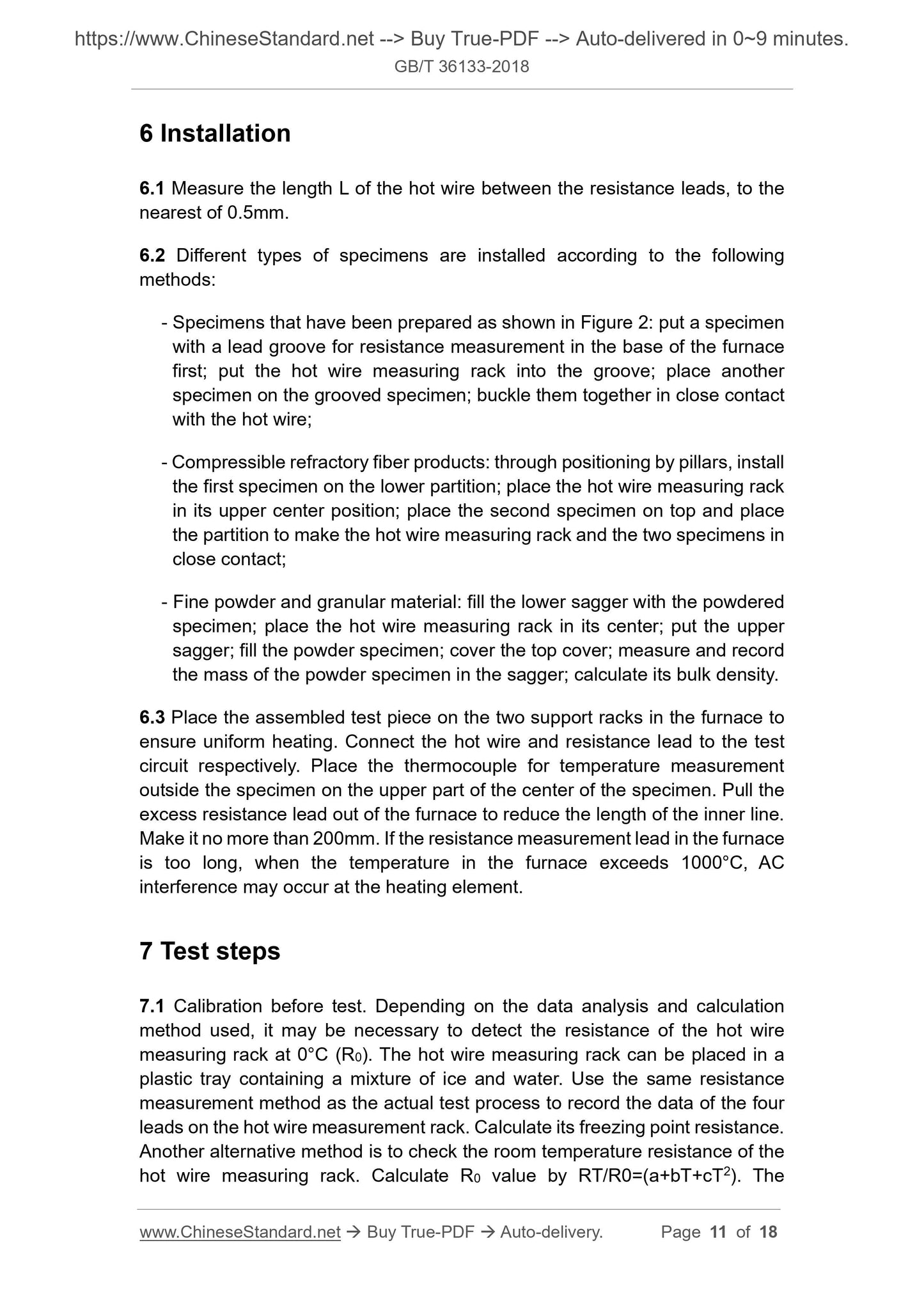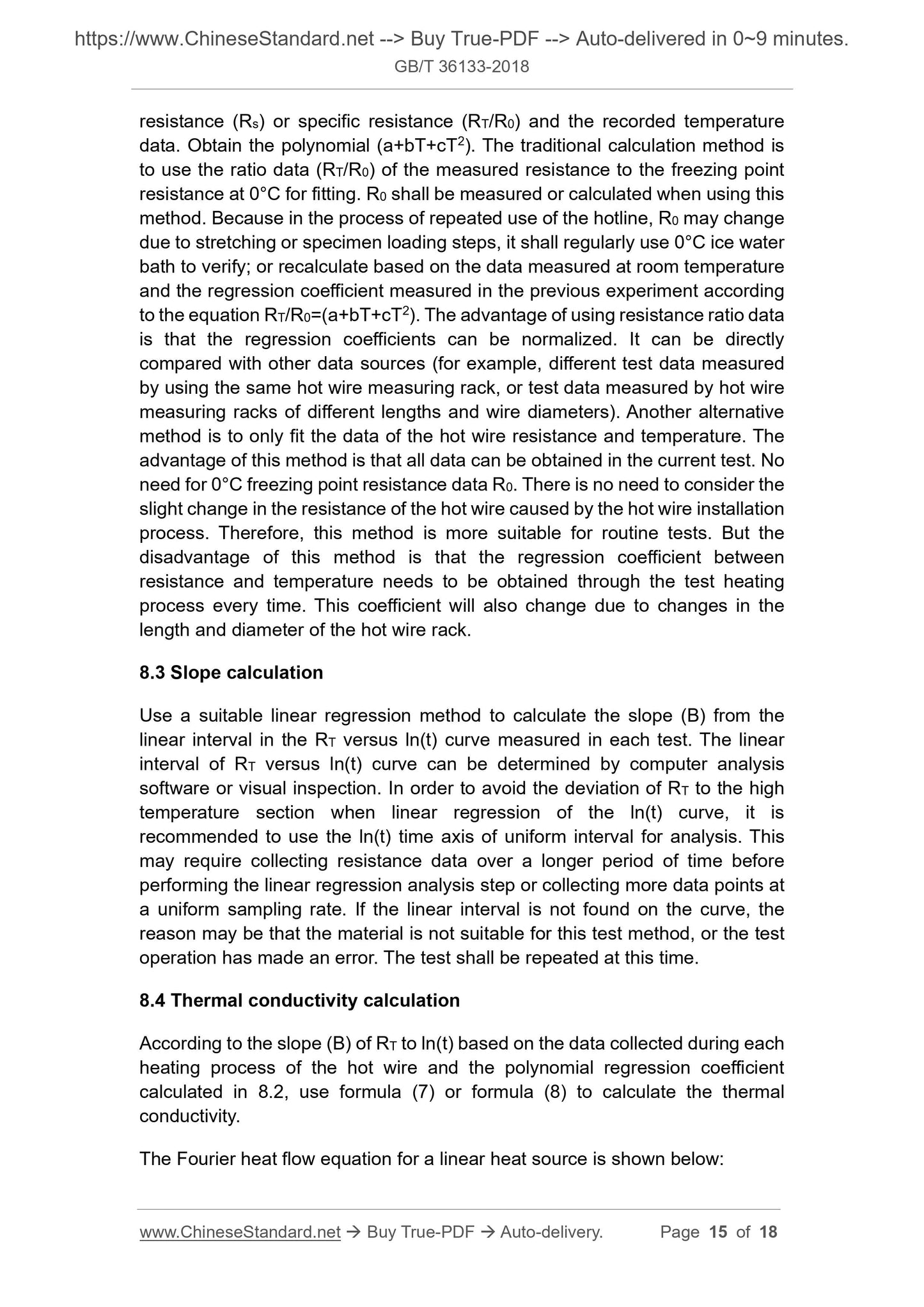1
/
of
8
www.ChineseStandard.us -- Field Test Asia Pte. Ltd.
GB/T 36133-2018 English PDF (GB/T36133-2018)
GB/T 36133-2018 English PDF (GB/T36133-2018)
Regular price
$190.00
Regular price
Sale price
$190.00
Unit price
/
per
Shipping calculated at checkout.
Couldn't load pickup availability
GB/T 36133-2018: Refractory materials - Determination of thermal conductivity (Platinum resistance thermometer method)
Delivery: 9 seconds. Download (and Email) true-PDF + Invoice.Get Quotation: Click GB/T 36133-2018 (Self-service in 1-minute)
Newer / historical versions: GB/T 36133-2018
Preview True-PDF
Scope
This Standard specifies the principle, equipment, specimen, installation, teststeps, result calculation and test report for determination of thermal conductivity
of refractory materials by platinum resistance thermometer method.
This Standard is applicable to determination of thermal conductivity of refractory
materials that have no carbon, no electrical conductivity and thermal
conductivity is not more than 15W/(m·K).
NOTE 1: The test temperature range of this Standard is from room temperature to 1500°C.
The upper limit of the test temperature also depends on the extreme temperature of the
material or the temperature at which the refractory material becomes a conductor.
NOTE 2: It is generally difficult to obtain accurate test values for heterogeneous materials,
especially for materials containing fibers. When using this method to test these materials,
it needs to be agreed by the relevant parties.
Basic Data
| Standard ID | GB/T 36133-2018 (GB/T36133-2018) |
| Description (Translated English) | Refractory materials - Determination of thermal conductivity (Platinum resistance thermometer method) |
| Sector / Industry | National Standard (Recommended) |
| Classification of Chinese Standard | Q40 |
| Classification of International Standard | 81.080 |
| Word Count Estimation | 11,141 |
| Date of Issue | 2018-05-14 |
| Date of Implementation | 2019-04-01 |
| Regulation (derived from) | National Standards Announcement No. 6 of 2018 |
| Issuing agency(ies) | State Administration for Market Regulation, China National Standardization Administration |
Share
